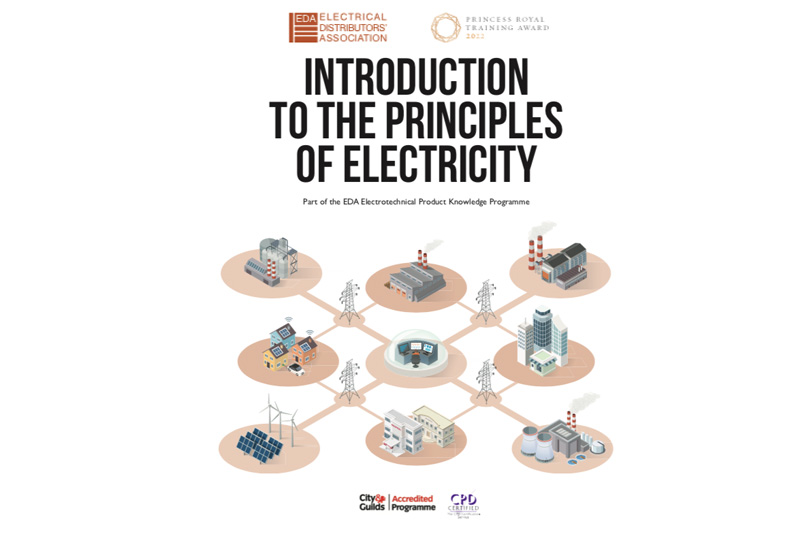Alex Smith, Technical Director at Flexicon, manufacturer of flexible conduit solutions, outlines some of the current technologies available to help electrical wholesalers capitalise on the growing refurbishment market.
The Government’s 2025 industrial strategy is encouraging the construction industry to reduce whole-life greenhouse gas emissions in the built environment by 50% and to halve construction lifecycle times.
Despite these ambitious targets to ‘build, build, build’, commercial property construction remains low in contrast to house building and infrastructure; and when it comes to upgrading the electrical infrastructure of existing properties, retrofit options are seen as key to success.
The state of the market
The current preference to renovate rather than demolish existing buildings and infrastructure is set to lead to an increase in refurbishment programmes and is cited as a major contributor to growth in the construction market.
Indeed, according to the joint report from the NICEIC and the Electrical Contractors’ Association (ECA) entitled ‘2021 Vision – The Future of the Electrical Contracting Industry’, “…Work will be required on virtually every building in the UK, with demand for systems to minimise energy consumption requiring the skills of electrical contractors for installation.”
This will naturally create opportunities to rewire and upgrade the electrical infrastructure in complete buildings, providing new sales growth for both electrical contractors and installers alike.
Reducing commercial carbon emissions
The UK Green Building Council reports that the built environment accounts for a staggering 40% of UK emissions, meaning that many commercial property owners are keen to reduce their carbon footprint – and to take advantage of lower running costs in the process.
Taking the hotel and leisure market as an example, there is an increased drive to make buildings more energy efficient. Green retrofit solutions such as new heating, ventilation systems and enhanced energy management control and monitoring have a key part to play and will require electrical cabling installations and infrastructure to be upgraded.
However, it is important to minimise the duration of installation programmes, while disruption to paying guests also needs to be minimised, meaning many contractors are looking for new and innovative products to ensure a fast and efficient upgrade.
In fact, in the 2021 Vision report, 96% of electrical contractors interviewed stated that new products to enable sustainable new build and renovation of existing properties represent an opportunity for their business growth.
Elsewhere, the rise of home renovations and extensions is considered as a serious alternative to moving to a larger property, alongside homeowners being encouraged to upgrade to energy-efficient solutions such as solar panels and heat pumps. These drivers are all leading to increased demand for retrofit electrical wiring systems, that will avoid major disruption to the building fabric or fixtures.
Retrofitting options
So, what options are available for electrical wholesalers to offer to their customers that need a simple retrofit cable protection solution?
Retrofitting cable protection has traditionally been a complex and lengthy task, with the installer required to pull existing cabling through the open end of a conduit system. Divisible conduits, such as the new Flexicon FPADS range, allow existing cabling to be inserted laterally via a slit opening. This product consists of two open conduit profiles, which then interlock to form a protected IP40 system around the cables.
It is also important to consider the cable routing. Traditional split conduit options can potentially expose cabling when bent or routed around corners, whereas the newer, divisible conduit options will maintain more mechanical strength and continuous protection of the cabling irrespective of orientation or routing due to their interlocking design.
Termination and fittings
All cable protection should be specified as a complete end-to-end system, taking into account not only the flexible conduit used, but the range of termination and fittings required also.
This has traditionally been a complex area for installers in retrofit applications, as historically, there has been less focus on design innovations for fittings and accessories until recent years.
To make it easier to terminate cabling in retrofit applications, Flexicon now offers its new Flexicon FPADS range, with a hinged fitting and locknut to wrap around existing cabling, meaning no disruption and easy and secure termination.
Protecting new cabling
As well as considering retrofit options, specifiers may also be tasked with installing new electrical cabling at the same time. In this scenario, there is a broader range of options available and specification should take into account the range of external hazards that the cabling may be exposed to; whether that is to meet a certain IP rating, enhanced fire performance properties, resistance to chemicals or UV exposure to name a few.
“To make it easier to terminate cabling in retrofit applications, Flexicon now offers its new Flexicon FPADS range, with a hinged fitting and locknut to wrap around existing cabling, meaning no disruption and easy and secure termination.”
For further information to help you advise customers on the ideal flexible conduit system for their installation, please visit: https://www.flexicon.uk.com/ or contact: flexiconsales@atkore.com.





